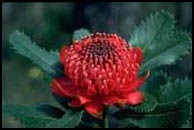Language is the key to kin
Language forms a vital part of any society, and language, song, art and cultural practice all provide means of communication by which Aboriginal people pass on traditions and laws for social interaction.
Aboriginal languages have complex vocabularies and grammar. Not only are there many different Aboriginal language groups but within a language group there are variations of meaning and usage according to who is speaking, who or what they are speaking about, and what the purpose for the communication is or the situation in which it is occurring.
For example, the complex structures of kin and family relationships in Aboriginal society are emphasised by the way people are categorised in language. Different names apply to the various complex kin relationships within the extended family, which do not have specific equivalents in English. Often a particular language group will have different forms for different or special purposes. This makes translation into English difficult and as a result, many misinterpretations of Aboriginal language have been made.

Language in Aboriginal societies is seen not only as a method of communication but also as a way of marking out family, social and cultural boundaries. With its form varying according to the age and status of people within the language group, language is used as a method of social control and delineation, giving social order to kinship and marriage laws. Other special forms of language may only be used during ceremonies, when talking with relatives or when discussing sacred matters.
There are thought to have been hundreds of distinct language groups in Australia before the arrival of European settlers with some of these appearing to have been lost or merged with other language groups since that time.
It is believed that the Dharawal (sometimes spelt Thurawal) language group covers the Woollahra Council boundaries.